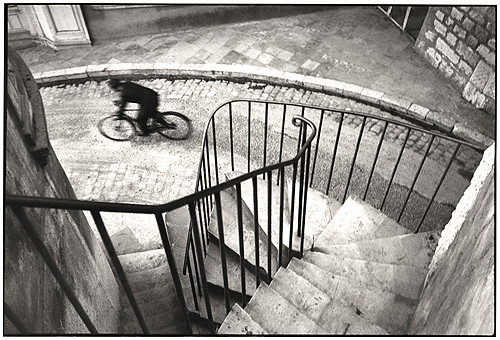"Berlin" also seems like it follows Cartiers decisive moment philosophy. In this photograph it looks like the men, whom appear to be policemen, are not impressed with him for one reason or another. The Composition of this photograph is good. The rule of thirds is applied and Cartier used a slightly larger aperture then in most of his photography, because the man slightly behind is out of focus. The only thing i would change is angle the camera slightly downwards to have more of the man in front in the photograph.
"Jean-Paul Sartre, Paris" is a photograph that i like a lot. The composition is fantastic, Jean-Paul is off the to far right with the bridges leading lines from the building in the background back to him. And the leading lines from the other mans eyes directly to Jean-Paul. To me this photograph is perfect compositionally.
Henri Cartier-Bresson used first a 3x4 inch view camera, and then soon after began using the Leica camera with 50 mm lens which he is famous for using. Henri never used flash in his photography, he liked being aloof, in fact he even disgusted his camera so that it was unnoticeable to people around him. Henri commonly used larger apertures to show every detail in the photographs and shutter speeds that were just too slow to stop the movement in his photos. My belief is that he did that to show that there was indeed motion in the photographs and that nothing was posed. Henri also liked to leave a lot of extra stuff in the frame. He did not like tight crops, he liked to show the environment as well and the subject. Compositionally he doesnt often break the rule of thirds, as with most photographers.



No comments:
Post a Comment